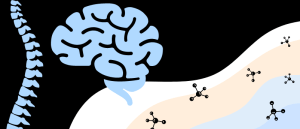Can aptamer ointments treat allergic contact dermatitis?

Researchers demonstrate that a DNA molecule, known as an aptamer, can combat allergic contact dermatitis in mice and has the potential to treat other skin conditions. Notably, the team has found that the aptamer is also effective when administered as an ointment.
Researchers at the University of Bonn (Germany) have successfully suppressed allergic symptoms associated with allergic contact dermatitis (ACD) in mice by inhibiting the chemokine, CCL22, with DNA aptamers. Furthermore, the team demonstrated, for the first time, that DNA aptamers have a therapeutic benefit when applied to the skin as an ointment.
Approximately 20% of the population suffers from contact allergies. In individuals with ACD, their proteins are modified by allergens – such as nickel, fragrances and cosmetic products. These modifications, though harmless, can trigger the immune system to release CCL22, which controls the migration of T cells to the site of contact and cause an allergic reaction.
To block the effects of CCL22, researchers looked at aptamers. Aptamers are single-stranded DNA molecules that can bind and influence other molecules. The aptamers distinctly bind to different molecules based on their sequence of elements and are therefore interesting for active ingredient research.
 Biomarkers of progressive supranuclear palsy identified in spinal fluid
Biomarkers of progressive supranuclear palsy identified in spinal fluid
The recent discovery of a unique protein pattern in spinal fluid may make earlier diagnosis of progressive supranuclear palsy a reality.
To isolate aptamers that bind to the immunological protein CCL22, the researchers first obtained a DNA library. Co-senior author Günter Mayer explains, “it is relatively easy to produce huge libraries of aptamers, the sequence of which differs at random. Some of these libraries contain millions more potential active ingredients than there are people alive on Earth.”
The team employed a flow cytometry-based interaction assay to isolate the aptamers binding to CCL22 and then chemically modified and further optimized those hits.
When the aptamer against CCL22 was administered in mice, they found that the chemokine was blocked to a certain extent; T cells that would usually be attracted to CCL22 could no longer detect the immune protein when it was bound to the aptamer. This resulted in the allergic skin reaction decreasing following treatment with the aptamer.
In addition, the researchers made a surprising novel discovery; the aptamer was also effective when it was applied to inflamed areas of the mice in the form of an ointment. Fluorescence microscopic imaging visualized the aptamers penetrating deeper dermal layers when applied to the top layer of the skin.
“This has enabled us to show for the first time that aptamers can also be administered in this form,” highlights Mayer. “The two lead authors Anna Jonczyk and Marlene Gottschalk, who conducted the experiments, were themselves surprised by this result and were thrilled by the future therapeutic potential.”
The researchers are currently looking into the possibility of using aptamer ointments to treat other skin conditions, including malignant melanoma and atopic dermatitis. However, it is important to note that additional studies will need to be performed to assess whether this therapeutic approach will also be effective in humans.